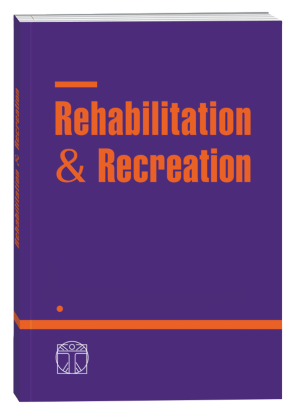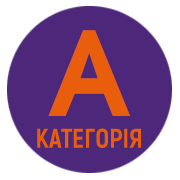THE IMPACT OF DIFFERENT MODELS OF POWER FITNESS TRAINING ON THE RE-ADAPTATION PROCESSES OF OVERWEIGHT ADOLESCENTS
DOI:
https://doi.org/10.32782/2522-1795.2025.19.2.30Keywords:
adolescents, overweight, training models, power fitness, body composition indicators, re-adaptationAbstract
The aim is to compare the impact of using different power fitness training models on body composition indicators and muscle strength levels in adolescents with normal and excessive body weight. Material and Methods. 64 adolescent boys aged 14–15 years (height: 165±4.8 cm) were examined. Among them, 32 untrained individuals with normal weight (NW) had an initial body fat mass (BFM%) of 16.2±1.3% (Group A). Another 32 adolescents were overweight (OW), with a BFM% of 40.7±1.8% (Group B), which is at least 2.2 times higher than the norm. During the study, the groups were divided into subgroups: A1, A2, B1, B2. Methods: Integrated quantitative assessment of power fitness loads (Ra, m, Wn), bioimpedance analysis (BFM, FFM, ACM), and control testing of muscle strength development (4RM). Monitoring was conducted every 30 days over 16 weeks. Participants in subgroup A1 followed training model 1 (Ra = 0.71; energy supply via the creatine phosphate mechanism; basic machine exercises). Adolescents in subgroups A2 and B1 used training model 2 (Ra = 0.65; anaerobic glycolysis as the energy supply; isolated machine exercises). Training Model 3 (Ra = 0.58; combined anaerobic and aerobic glycolysis; isolated free weight exercises with altered kinematic characteristics) was applied to subgroup B2. Results. A long-term use of training model 1 proved to be the most effective stimulus for increasing BFM and active cell mass (ACM), accompanied by a significant increase in muscle strength in NW adolescents. At the same time, the BFM% under these conditions remained virtually unchanged compared to the initial values. Employing model 2 helped increase their BFM and ACM parameters across all study participants. Simultaneously, under this model, the studied muscle strength (4RM) and BFM% indicators among overweight adolescents showed clear positive dynamics. The greatest reduction in BFM% and the highest increase in ACM% among OW adolescents were observed in study participants following the power fitness training model 3. Conclusions. When developing training models for OW adolescents, it is essential to consider not only their initial body composition parameters but also the level of the body’s resistance to physical loads. Using moderate-intensity load (Ra = 0.65) based on anaerobic glycolysis and isolated machine exercises promoted the most pronounced re-adaptation in OW adolescents. Using isolated machine exercises with adjusting body position to reduce stabilizer muscle activity slowed energy resource depletion rates, especially in cases of low adaptive reserves.
References
1. Abassi, W., Ouerghi, N., Feki, M., Jebabli, N., Andrade, M., Bouassida, A., Sousa, C., Nikolaidis, P., Weiss, K., Knechtle, B. (2023). Effects of moderate– vs. high-intensity interval training on physical fitness, enjoyment, and affective valence in overweight/obese female adolescents: a pre-/post-test study. Eur Rev Med Pharmacol Sci. 27(9):3809–3822. https://doi.org/10.26355/eurrev_202305_32286
2. Benzo, R., George, S., Messiah, S., Lovan, P., Leite, R., Pate,l A., Lee, T., Prado, G. (2023). Physical Fitness Among AdolescentsWho are Hispanic With Overweight or Obesity. Pediatr Phys Ther. 35(2):252–258. https://doi.org/10.1097/PEP.0000000000000997
3. Branco, B., Carvalho, I., Oliveira, H., Fanhani, A., Santos, M., Oliveira, L., Boni, S., Junior, N. (2020). Effects of 2 Types of Resistance Training Models on Obese Adolescents’ Body Composition, Cardiometabolic Risk, and Physical Fitness. J Strength Cond Res. 34(9):2672–2682. https://doi.org/10.1519/JSC.0000000000002877
4. Chernozub, A., Titova, A., Dubachinskiy, O., Bodnar, A., Abramov K., Minenko, A., Chaban, I. (2018). Integral method of quantitative estimation of load capacity in power fitness depending on the conditions of muscular activity and level of training. Journal of Physical Education and Sport. 18(1):217–221. https://doi.org/10.7752/jpes.2018.01028
5. Chernozub, A., Manolachi, V., Potop, V., Khudyi, O., Kozin, S., Bokatuieva, V., Kizilova, A., Stanescu, M., Timnea, O.C. (2023). Kinesiological models of the neuromuscular system readaptation in mature women after prolonged hypokinesia. Health, Sport, Rehabilitation. 9(1):78–92. https://doi.org/10.34142/HSR.2023.09.01.07
6. Chernozub, A., Koval, V., Derliuk, O. (2025). Adaptive-compensatory reactions of the organism of untrained adolescents with different types of heart rate regulation to power fitness load. Rehabilitation and Recreation, 19(1):117–126. https://doi.org/10.32782/2522-1795.2025.19.1.11
7. Cohen, D., Sandercock, G., Camacho, P., Otero-Wandurraga, J., Romero, S., Marín, R., Sierra, C., Carreño, J., Moran, J., Lopez-Jaramillo, P. (2021). The SIMAC study: A randomized controlled trial to compare the effects of resistance training and aerobic training on the fitness and body composition of Colombian adolescents. PLoS One. 16(4):e0248110. https://doi.org/10.1371/journal.pone.0248110
8. Egan, C., Mercia, C., Bond, L., Vella, C., Paul, D. (2024). Development of a Fitness Surveillance System to Track and Evaluate Obesity in North Idaho. J Sch Health. 94(3):259–266. https://doi.org/10.1111/josh.13366
9. Ferozi, S., Taneja, A., Bakshi, N. (2024). Assessment of nutritional status, physical fitness and physical activity of school going adolescents (12–15 years) in Delhi. BMC Pediatr. 24(1):331. https://doi.org/10.1186/s12887-024-04733-y
10. Górnicka. M., Hamulka. J., Wadolowska. L., Kowalkowska. J., Kostyra. E., Tomaszewska. M., Czeczelewski. J., Bronkowska. M. (2020). Activity-Inactivity Patterns, Screen Time, and Physical Activity: The Association with Overweight, Central Obesity and Muscle Strength in Polish Teenagers. Report from the ABC of Healthy Eating Study. Int J Environ Res Public Health. 17(21):7842. https://doi.org/10.3390/ijerph17217842
11. Koval, V., Tsos, A., Olkhovyi, O., Drobot, K., Chernozub, A., Potop, V. (2025). Overtraining syndrome in bodybuilding and the difficulty of searching for informative biomarkers for disadaptation diagnostics. Physical Rehabilitation and Recreational Health Technologies. 10(2):108–119. https://doi.org/10.15391/prrht.2025-10(2).06
12. Manzano-Carrasco, S., Garcia-Unanue, J., Haapala, E., Felipe, J., Gallardo, L., Lopez-Fernandez, J. (2023). Relationships of BMI, muscle-to-fat ratio, and handgrip strengthto-BMI ratio to physical fitness in Spanish children and adolescents. Eur J Pediatr. 182(5):2345–2357. https://doi.org/10.1007/s00431-023-04887-4
13. Potop, V., Manolachi, V., Chernozub, A., Kozin, V., Syvokhop, E., Spivak, A., Sharodi, V., & Jie, Z. (2023). Changes in circumference sizes of bodybuilders using machine and free weight exercises in combination with different load regimes. Health, Sport, Rehabilitation, 9(2), 74–85. https://doi.org/10.34142/HSR.2023.09.02.06
14. Potop, V., Mihailescu, L., Mahaila, I., Zawadka-Kunikowska, M., Jagiello, W., Chernozub, A., Baican, M., Timnea, O., Ene-Voiculescu, C., Ascinte, A. (2024). Applied biomechanics within the Kinesiology discipline in higher education. Physical Education of Students. 28(2):106–19. https://doi.org/10.15561/20755279.2024.0208
15. Silva, M., Waclawovsky, G., Perin, L., Camboim, I., Eibel, B., Lehnen, A. (2020). Effects of high-intensity interval training on endothelial function, lipid profile, body composition and physical fitness in normal-weight and overweight-obese adolescents: A clinical trial. Physiol Behav. 1:213:112728. https://doi.org/10.1016/j.physbeh.2019.112728
16. Souza F., Miranda C., Bim M., Lima L., Gonzaga I., Claumann G., Beltrame T., Pinto A., Pelegrini A. (2024). Positive secular trend in excess body weight in adolescents: A comparative study of 2007 and 2017/2018 data. PLoS One. 19(12):e0310452. https://doi.org/10.1371/journal.pone.0310452
17. Tadiotto, M., Corazza, P., Menezes-Junior, F., Moraes-Junior, F., Tozo, T., Purim, K., Mota, J., Leite, N. (2020). Activity-Inactivity Patterns, Screen Time, and Physical Activity: The Association with Overweight, Central Obesity and Muscle Strength in Polish Teenagers. Report from the ABC of Healthy Eating Study. Int J Environ Res Public Health. 17(21):7842. https://doi.org/10.3390/ijerph17217842
18. Wang, Z., Ma, H., Zhang, W., Zhang, Y., Youssef, L., Carneiro, M., Chen, C., Wang, D., Wang, D. (2024). Effects of Functional Strength Training Combined with Aerobic Training on Body Composition, Physical Fitness, and Movement Quality in Obese Adolescents.Nutrients. 16(10):1434. https://doi.org/10.3390/nu16101434
19. Żegleń, M., Kryst, Ł., Kuszewska, G., Kowal, M., Woronkowicz, A. (2023). Association between physical fitness and normal weight obesity in children and adolescents from Poland. Am J Hum Biol. 35(11):e23953. https://doi.org/10.1002/ajhb.23953
20. Zhang, Y., Su, F., Song, Y., Lu, J. (2022). Associations between Physical Fitness Index and Body Mass Index in Tibetan Children and Adolescents in Different High-Altitude Areas: Based on a Study in Tibet, China. Int J Environ Res Public Health. 19(16):10155. https://doi.org/10.3390/ijerph191610155
21. Zheng, B., Xu, Q., Zhang, J. (2025). Combining HIIT with Small-Sided Soccer Games Enhances Cardiometabolic and Physical Fitness More Than Each Alone in Overweight Youth: A Randomized Controlled Study. J Sports Sci Med. 24(1):104–115. https://doi.org/10.52082/jssm.2025.104
Downloads
Published
How to Cite
Issue
Section
License

This work is licensed under a Creative Commons Attribution-NonCommercial-NoDerivatives 4.0 International License.





